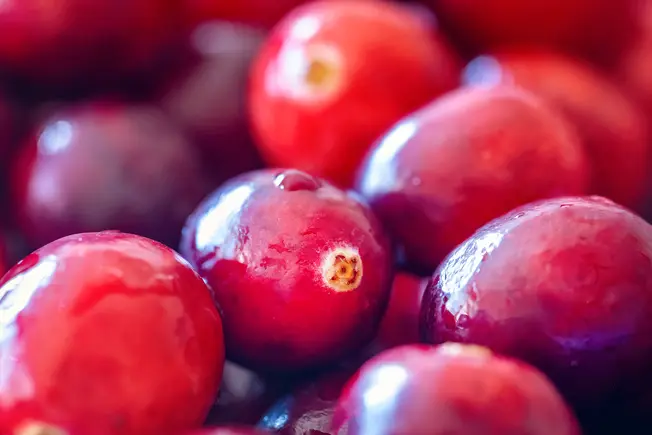
High in Antioxidants
1/12
Cranberries take center stage during the holidays, but this cousin of the blueberry, huckleberry, and lingonberry is good for you all year long. Cranberries are high in antioxidants that lower inflammation, which is linked to conditions like type 2 diabetes, heart disease, and rheumatoid arthritis.

Cavity Fighters
2/12
Originally named “crane berry” because their blossoms looked like the head of a Sandhill crane, cranberries have large amounts of polyphenols. Polyphenols are plant micronutrients that stop bacteria from growing. When you eat a cranberry, the polyphenols stay in your saliva even after you’ve chewed and swallowed. There, they help prevent tooth decay, gum disease, and oral cancer.

Gut Protectors
3/12
Cranberries are one of the only fruits to have A-type proanthocyanidins, which help stop gut infections before they start. These polyphenols help keep your gut flora healthy and prevent H. pylori infection, which can cause gastric ulcers. They also give cranberries their bright red color.

Good Source of Fiber
4/12
Cranberries grow in bogs, which are marshes of layered sand, peat, and gravel formed by glaciers thousands of years ago. The bog protects this unique fruit which contains large amounts of healthy fiber. One cup of fresh cranberries has 5 grams of fiber to help your body absorb sugar more slowly, prevent constipation, and make you feel full faster.

High in Vitamin C
5/12
One cup of raw cranberries packs 14.6 mg of vitamin C per serving — about 25% of your daily requirement. In the 1600s, cranberries became popular with European settlers for keeping scurvy away, though native peoples first used them as both food and medicine.

Heart Helpers
6/12
The health benefits of cranberries are still being studied. Early research shows that the cholesterol-, fat-, and sodium-free fruit may lower your “bad” cholesterol and raise your “good” cholesterol, helpful for better blood pressure and heart function.

The UTI Myth
7/12
Many people think cranberries can prevent and cure urinary tract infections (UTIs). But there is not strong science to back this up. The A-type proanthocyanidins in cranberries help stop bacteria from sticking to bladder cells in the lab, but more studies are needed to see if this works in the human body. Cranberries might not have enough of this compound to prevent infection. Cranberries can’t cure a UTI once it starts.

Potential Drug Interactions
8/12
If you take blood thinners like warfarin (Coumadin) or aspirin, talk to your doctor before eating cranberries, drinking cranberry juice, or taking a cranberry supplement. Both cranberries and these medications contain salicylic acid, which can cause bleeding.

Raw Cranberries Are Healthiest
9/12
Because they taste more bitter than sweet, raw cranberries are less popular than dried cranberries and cranberry juice, but they’re better for you. One cup of raw cranberries has 4 grams of natural sugar. Meanwhile, a cup of dried cranberries has about 25 grams of added sugar, and one cup of cranberry juice has 25–30 grams of added sugar. If you have dried cranberries or cranberry juice, balance them out with low-sugar foods.

How to Select and Store Cranberries
10/12
Fresh cranberries are in season from October through January: More than 1.3 billion pounds are harvested every year. Look for fresh cranberries that are firm and plump, and avoid any that are soft or brown. Store them in the bag they came in (or another sealed bag) in your refrigerator’s crisper for up to 2 months. Don’t wash cranberries until you’re ready to use them.

Ways to Eat Cranberries
11/12
To reap the benefits of this superfood, try tossing a handful of dried berries in salads, oatmeal, or cookies. For more sweetness without added sugar, pair raw cranberries with apples in pies, fruit salsas, and relishes. You can also make your own cranberry sauce. Bring 1 cup of water and up to 1 cup of sugar to a boil; add 12 ounces of rinsed cranberries. Add spices like clove or cinnamon to taste; cook for 10 minutes. Cool before serving.

Too Much of a Good Thing
12/12
Cranberries in all forms are usually safe for people who don’t have certain health conditions. They’re high in oxalate, a natural plant compound that could increase your risk for certain kinds of kidney stones. If you have a history of kidney stones, ask your doctor before eating or drinking a lot of cranberry products. If you have diabetes, check the sugar content, as some are high in sweeteners.